I calibrated my camera using, separately, ROS, OpenCv and Matlab. People say that I need extrinsic parameters to calculate real distance between pixels in cm from the image. ROS does not provide extrinsic parameters explicitly, it provides a (4,3) projection matrix which is the output of multiplied intrinsic and extrinsic parameters.
That is why I again calibrated my camera using OpenCv and Matlab to get extrinsic parameters. Although I searched how can I calculate real distance in cm between pixels (i.e from (x1,y1) to (x2,y2)), I could not figure out how to calculate the real distance. Moreover, I did not understand that which parameters to use for distance calculation. I want to use OpenCv to calculate the distance between pixels and write the output as a txt file so that I can use this txt file to move my robot.
For example, here is array of pixel output sample for the path,
array([[ 4.484375 , 799.515625 ],
[ 44.484375 , 487. ],
[255.296875 , 476.68261719],
[267.99707031, 453.578125 ],
[272.484375 , 306. ],
[403.484375 , 300.515625 ],
[539.484375 , 296.515625 ],
[589.421875 , 270.00292969],
[801.109375 , 275.18554688],
[819. , 467.515625 ]])
I want to find the real distance in cm between these pixels in an order.
OpenCv Code that calculating parameters:
import numpy as np
import cv2
import glob
# termination criteria
criteria = (cv2.TERM_CRITERIA_EPS + cv2.TERM_CRITERIA_MAX_ITER, 30, 0.001)
cbrow = 6
cbcol = 9
# prepare object points, like (0,0,0), (1,0,0), (2,0,0) ....,(6,5,0)
objp = np.zeros((cbrow*cbcol,3), np.float32)
objp[:,:2] = np.mgrid[0:cbcol,0:cbrow].T.reshape(-1,2)
# Arrays to store object points and image points from all the images.
objpoints = [] # 3d point in real world space
imgpoints = [] # 2d points in image plane.
images = glob.glob('C:\Users\Ender\Desktop\CalibrationPhotos\*.jpg')
for fname in images:
img = cv2.imread(fname)
gray = cv2.cvtColor(img,cv2.COLOR_BGR2GRAY)
# Find the chess board corners
ret, corners = cv2.findChessboardCorners(gray, (cbcol,cbrow),None)
# If found, add object points, image points (after refining them)
if ret == True:
print "%s: success" % fname
objpoints.append(objp)
cv2.cornerSubPix(gray,corners,(11,11),(-1,-1),criteria)
imgpoints.append(corners)
# Draw and display the corners
cv2.drawChessboardCorners(img, (cbcol,cbrow), corners,ret)
cv2.imshow('img',img)
cv2.waitKey(150)
else:
print "%s: failed" % fname
cv2.imshow('img',img)
cv2.waitKey(1)
cv2.destroyAllWindows()
ret, mtx, dist, rvecs, tvecs = cv2.calibrateCamera(objpoints, imgpoints, gray.shape[::-1],None,None)
print "mtx"
print mtx
print "dist"
print dist
#print "rvecs"
#print rvecs
#print "tvecs"
#print tvecs
np.savez("CalibData.npz" ,mtx=mtx, dist=dist, rvecs=rvecs, tvecs=tvecs)
#UNDISTROTION
img = cv2.imread('C:\Users\Ender\Desktop\Maze\Maze Images\Partial Maze Images-Raw\Raw7.jpg')
h, w = img.shape[:2]
newcameramtx, roi=cv2.getOptimalNewCameraMatrix(mtx,dist,(w,h),1,(w,h))
dst = cv2.undistort(img, mtx, dist, None, newcameramtx)
# crop the image
x,y,w,h = roi
dst = dst[y:y+h, x:x+w]
cv2.imwrite('calibresult.jpg',dst)
#Re-projection Errors
total_error = 0
for i in xrange(len(objpoints)):
imgpoints2, _ = cv2.projectPoints(objpoints[i], rvecs[i], tvecs[i], mtx, dist)
error = cv2.norm(imgpoints[i],imgpoints2, cv2.NORM_L2)/len(imgpoints2)
total_error += error
print "total error: ", total_error/len(objpoints)
What is the way of doing this ?
